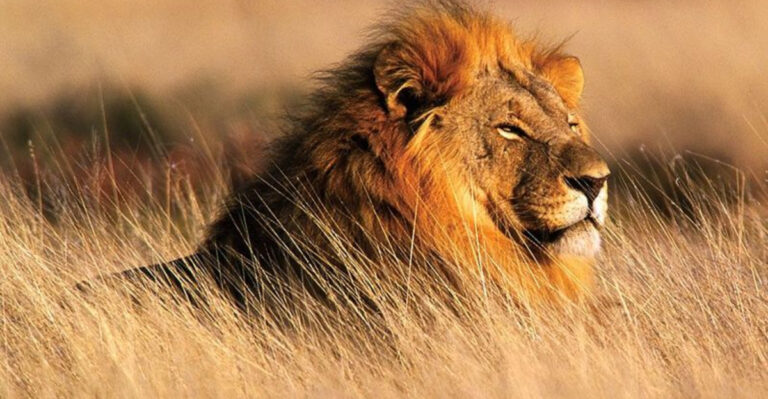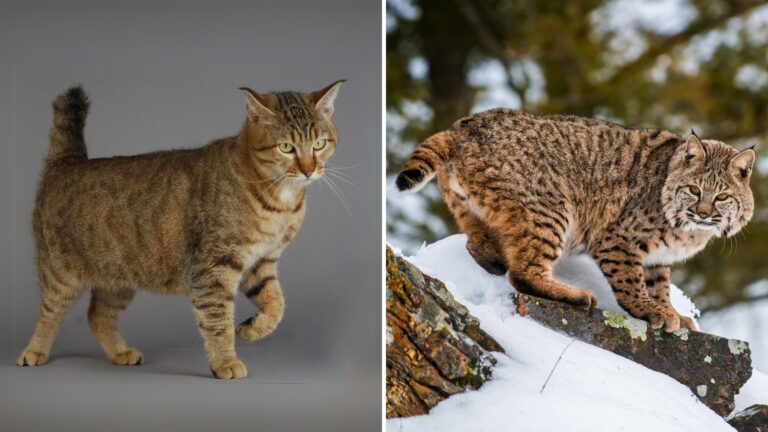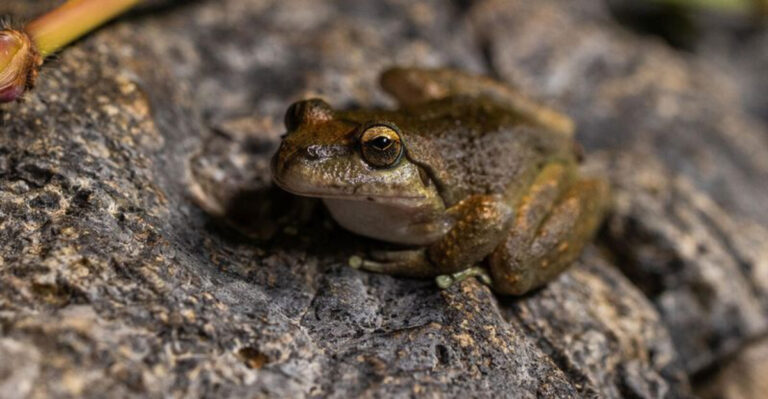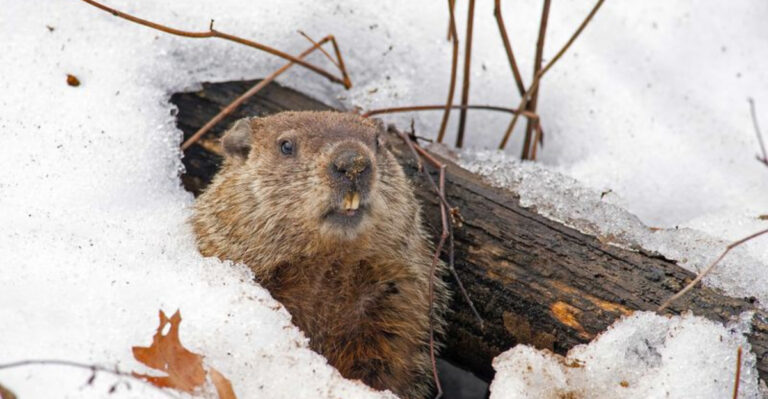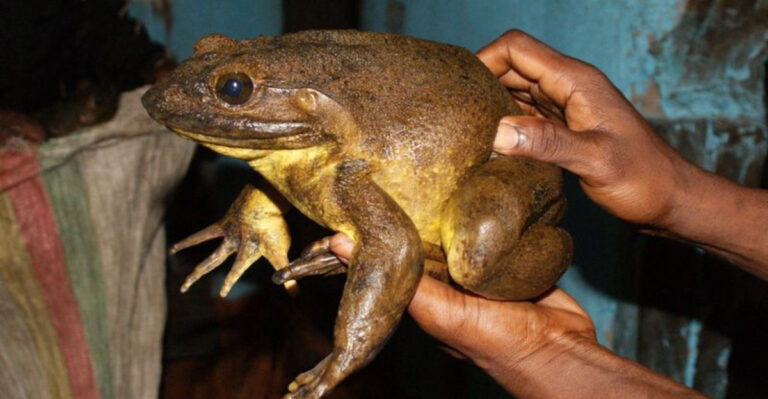Top 20 Animals And Wildlife In Madagascar
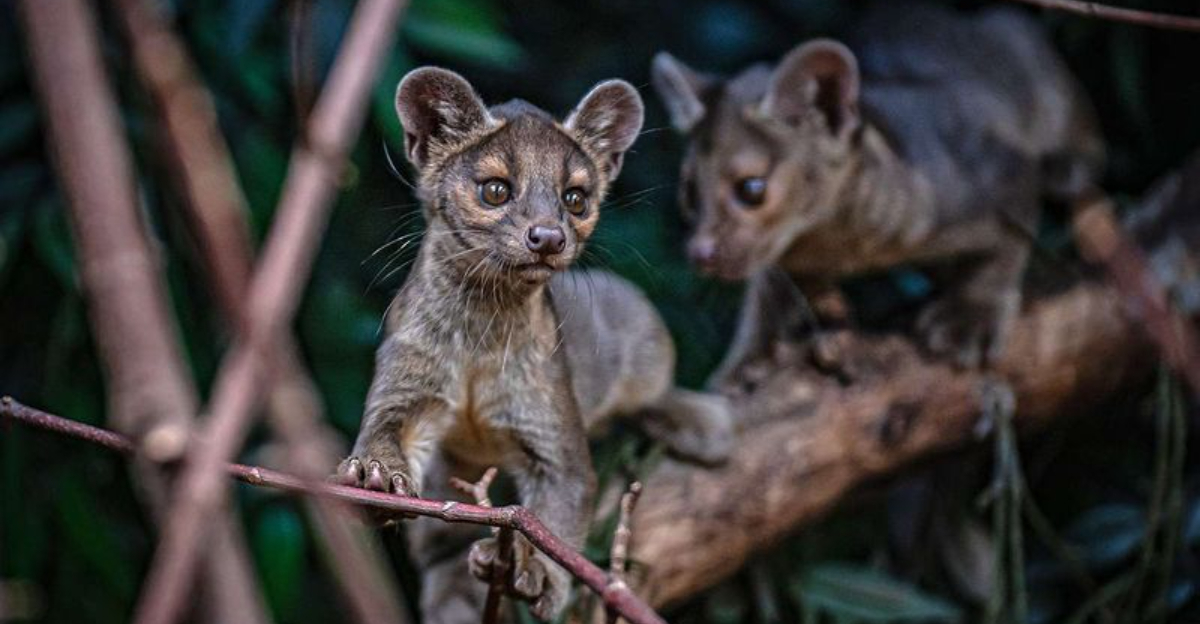
Madagascar, the world’s fourth-largest island, is a treasure trove of unique wildlife and vibrant ecosystems.
Separated from mainland Africa millions of years ago, Madagascar has evolved its own distinct species, making it a haven for naturalists and wildlife enthusiasts alike. This incredible biodiversity is not just fascinating but crucial, as it includes species found nowhere else on Earth.
From the iconic lemurs swinging through the rainforest canopies to the colorful chameleons blending in with their surroundings, Madagascar’s fauna is a testament to nature’s creativity and resilience.
Let’s embark on an exhilarating journey to uncover the top 20 animals that call Madagascar home, each with its own captivating story and charm.
1. Ring-tailed Lemur
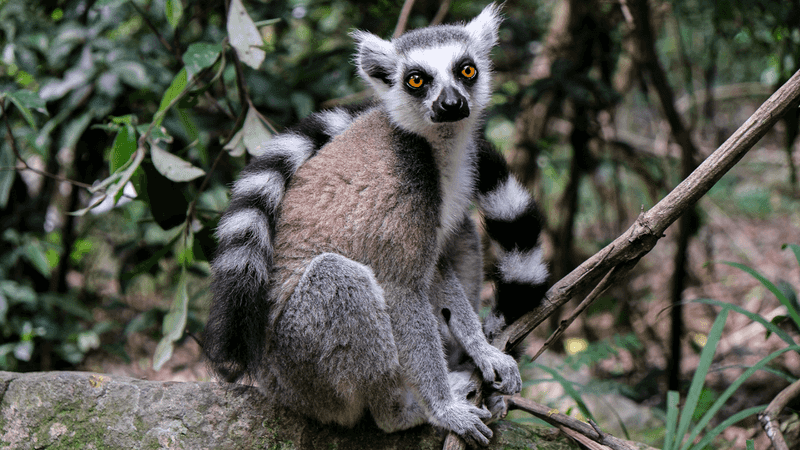
In the heart of Madagascar’s forests, a dynamic creature swings with grace and agility. This isn’t just any primate; it’s the ring-tailed lemur, an emblem of Madagascar’s rich wildlife heritage. With a tail lined in black and white rings, it’s impossible not to notice them as they leap between trees. Their social nature is remarkable, living in groups known as troops. These lemurs are matriarchal, with females leading the group on daily foraging expeditions.
Their diet consists mainly of fruits, leaves, and flowers, making them vital seed dispersers in their habitat. Observing their morning sunbathing ritual is a delight; they sit upright, arms outstretched, absorbing the warmth.
However, the ring-tailed lemur’s existence is threatened by habitat destruction and hunting. Conservation efforts are crucial to ensuring that these enchanting creatures continue to thrive in Madagascar’s forests for generations to come.
2. Fossa
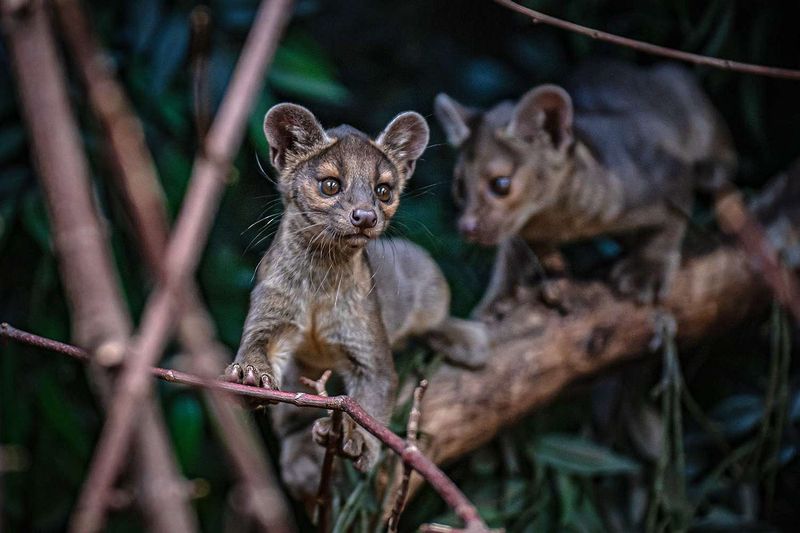
Deep within Madagascar’s dense forests roams a predator so elusive it’s like something from a legend. The fossa, resembling a curious blend of cat and mongoose, is the island’s top predator. Its agile body allows it to navigate the forest with ease, hunting lemurs and other small animals.
Despite their feline appearance, fossas are more closely related to the mongoose family. Their muscular build and sharp claws make them formidable hunters. Observing a fossa is a rare and privileged experience, given their secretive nature.
However, these remarkable hunters face challenges as their habitats are increasingly encroached upon by human activities. Conservationists work tirelessly to protect the forests that the fossa calls home, ensuring this unique creature remains a vital part of Madagascar’s ecosystem.
3. Aye-aye
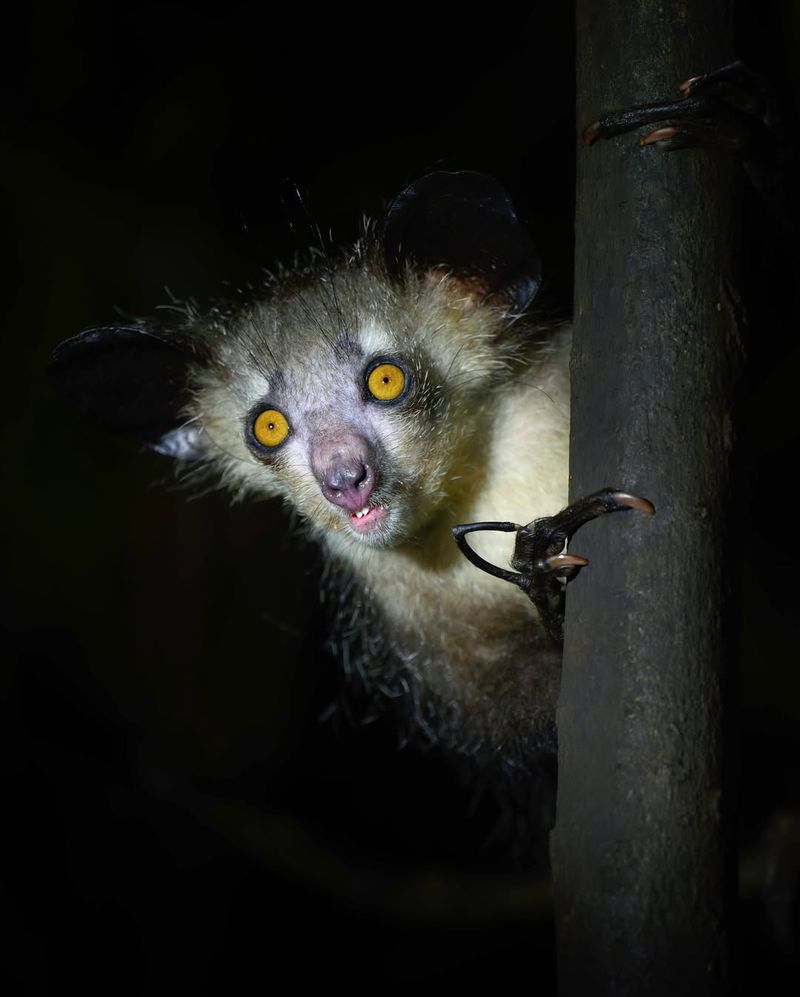
In the mysterious, dimly lit forests of Madagascar, a cryptic creature taps away at tree bark with an elongated middle finger. The aye-aye, often misunderstood, is a nocturnal lemur with a peculiar appearance. With eyes that pierce the night and ears that capture the faintest sounds, it hunts for insects hidden beneath tree bark.
This lemur defies typical beauty standards; its shaggy fur and rodent-like teeth add to its mystique. Yet, every trait serves a purpose in its survival. Its method of foraging, known as percussive foraging, is a skill unmatched in the animal kingdom.
Regrettably, the aye-aye faces threats from superstition and habitat loss. Despite being viewed as an omen of ill luck by locals, conservationists are shedding light on its ecological importance, striving to shift perceptions and safeguard its future.
4. Indri
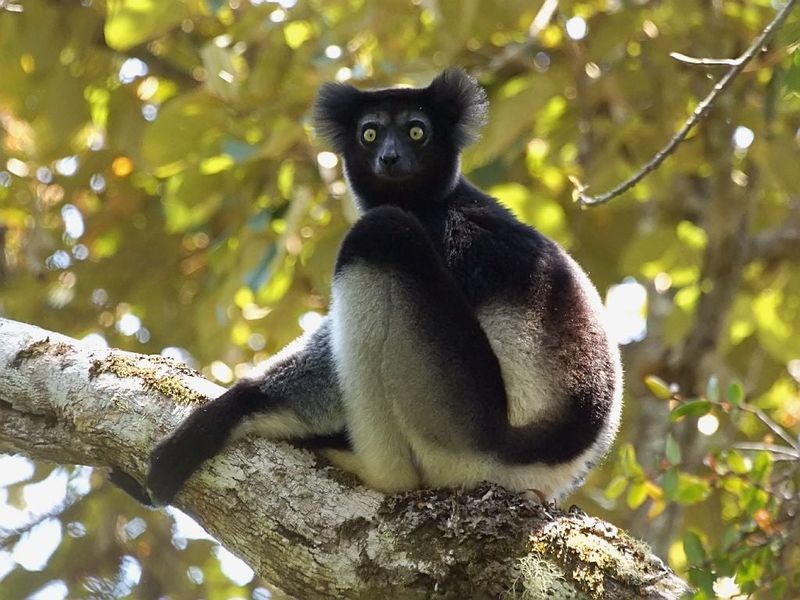
High in Madagascar’s rainforests, an ethereal song echoes through the trees—a sound synonymous with the island’s wild heart. This is the call of the indri, the largest living lemur, whose haunting songs strengthen bonds within groups and declare territory.
With a black and white coat and expressive face, the indri is an extraordinary sight. Unlike many of its relatives, the indri does not have a tail, relying on its powerful legs to leap from tree to tree. Its diet of leaves demands a specialized gut, capable of digesting tough plant material.
The indri’s future is precarious, as deforestation threatens its habitat. Conservation efforts focus on preserving these crucial areas, ensuring the indri’s song continues to be heard, resonating through Madagascar’s forests as a symbol of hope and resilience.
5. Sifaka
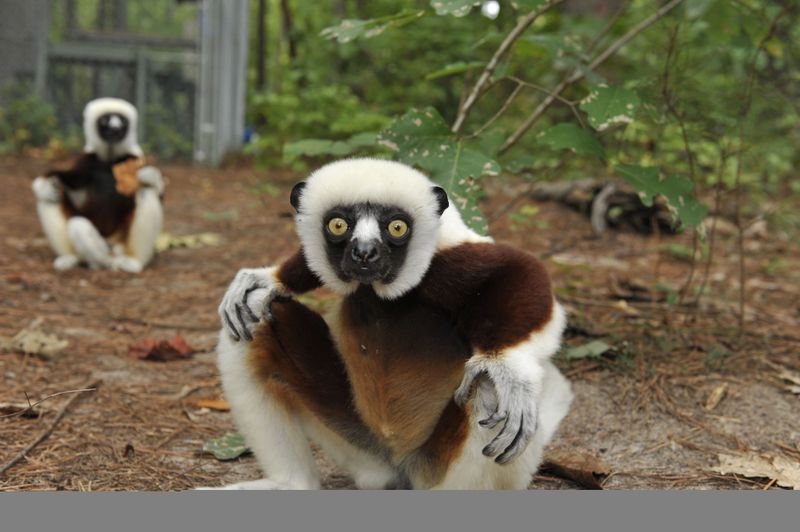
In the vibrant forests of Madagascar, an acrobat leaps with unparalleled grace among the trees. This is the sifaka, a lemur species known for its striking white fur and vivid black face. Their powerful hind legs enable them to cover impressive distances with each leap, sometimes spanning over 30 feet in a single bound.
Sifakas live in small family groups, their social structures fostering strong bonds and cooperation. Their diet primarily consists of leaves, flowers, and fruits, making them vital to their ecosystem as seed dispersers.
However, sifakas are under threat from habitat loss and hunting. Conservation efforts are underway to protect these agile creatures, ensuring the forests of Madagascar remain their sanctuary. Witnessing a sifaka in motion is to watch a masterclass in elegance and agility, a true testament to the wonders of evolution.
6. Panther Chameleon
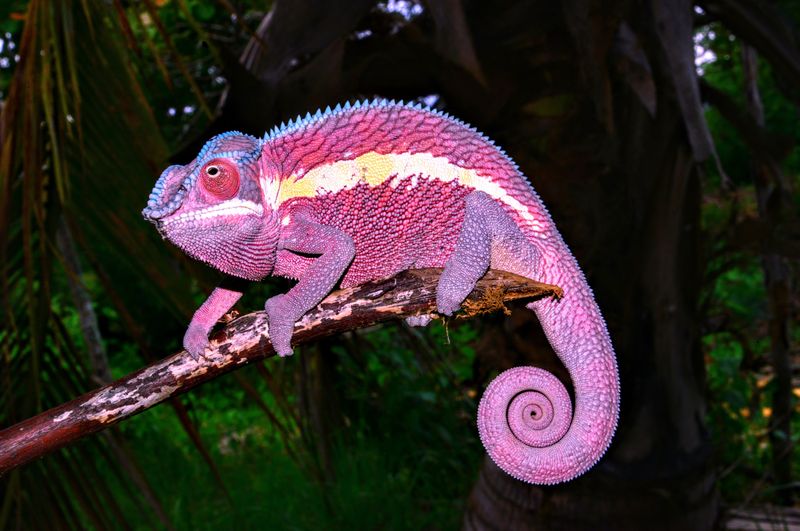
On the island of Madagascar, a master of disguise reclines amidst the foliage. The panther chameleon, renowned for its vibrant colors, is a spectacle of nature’s artistry. Its skin, a dynamic canvas, shifts hues in response to its environment and emotions, showcasing a mesmerizing palette of greens, reds, and blues.
These reptiles are not just pretty faces; their independently moving eyes can focus on two different objects simultaneously, aiding in spotting prey. Their projectile tongues extend rapidly to capture insects with astounding precision.
Despite their popularity in the pet trade, wild populations face pressure from habitat destruction. Conservationists advocate for sustainable practices to protect these remarkable creatures, ensuring that future generations can witness the chameleon’s kaleidoscopic wonder in Madagascar’s wild.
7. Madagascar Pochard
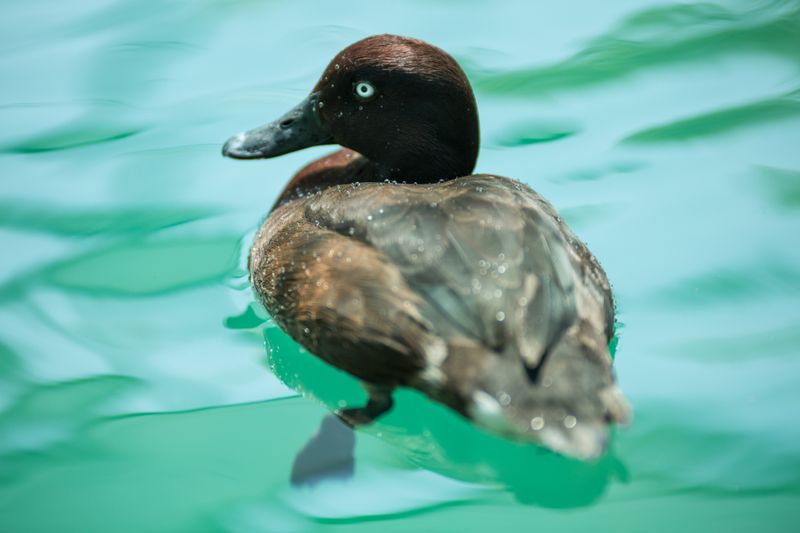
In the tranquil waters of Madagascar, a rare duck paddles with quiet determination. The Madagascar pochard, once thought extinct, is a symbol of hope and resilience. This diving duck, with its rich brown plumage and striking eyes, was rediscovered in 2006, sparking a global conservation effort.
Living in high-altitude lakes, these ducks face numerous challenges, from habitat degradation to limited food resources. Their survival story is a testament to the dedicated conservationists who work tirelessly to protect and restore their habitats.
Captive breeding programs aim to bolster their numbers, with the goal of reintroducing these ducks into more suitable habitats. The Madagascar pochard stands as a beacon of what perseverance and collaborative efforts can achieve in the realm of wildlife conservation.
8. Tomato Frog
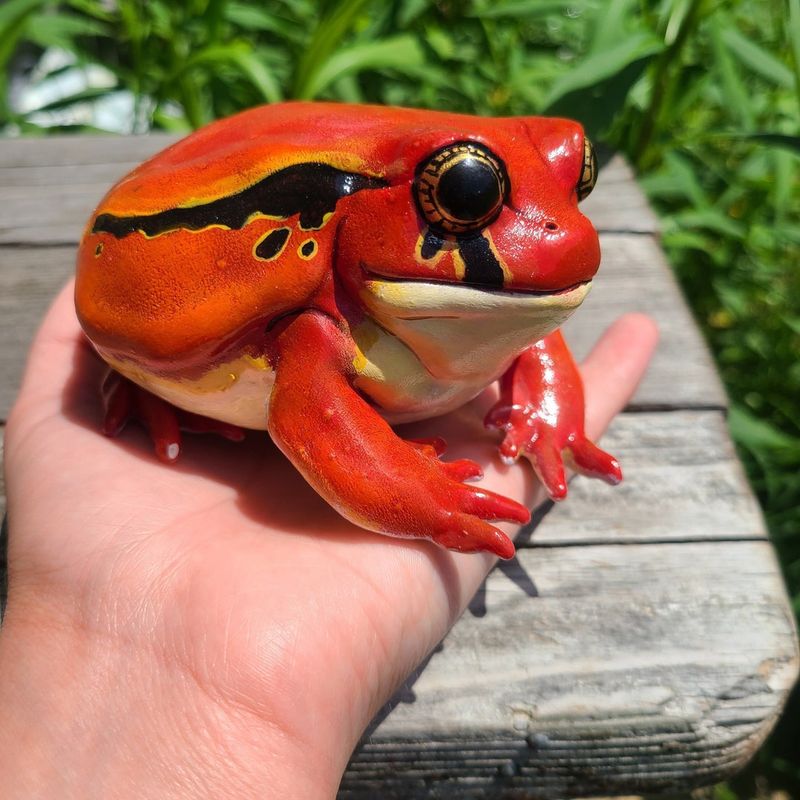
On the forest floor of Madagascar, a splash of vivid color catches the eye—the tomato frog. This amphibian’s bright red hue is nature’s warning sign to potential predators. When threatened, the tomato frog secretes a sticky substance that can deter attackers, a fascinating defense mechanism.
Their habitat, often near water bodies, provides the perfect setting for their unique lifecycle. From eggs laid in shallow waters to the transformation into adult frogs, each stage is a marvel of adaptation.
While the tomato frog’s vivid coloration is captivating, it also faces challenges from habitat loss and the illegal pet trade. Conservation initiatives aim to protect their habitats and educate the public on the importance of preserving such unique species, ensuring these bright amphibians continue to adorn Madagascar’s forests.
9. Leaf-tailed Gecko
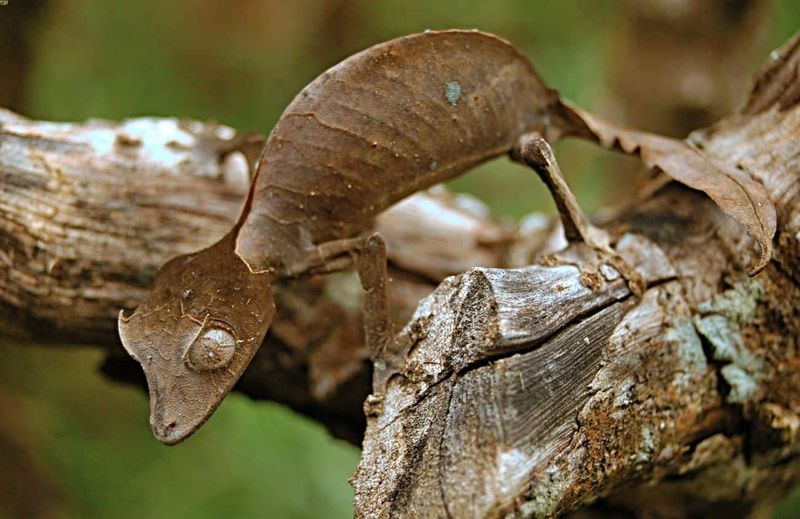
Perched stealthily in Madagascar’s forests is a creature that redefines the art of camouflage. The leaf-tailed gecko, with its uncanny resemblance to a dead leaf, is a master at blending into its surroundings. This nocturnal reptile’s textured skin and leaf-like tail make it nearly invisible amidst the forest floor’s debris.
Their diet of insects and spiders is crucial for maintaining ecological balance. Quick and efficient, they are both hunters and prey, showcasing nature’s intricate food web.
These geckos face threats from habitat destruction and collection for the pet trade, yet their survival depends on the preservation of Madagascar’s forests. Efforts to protect these unique habitats are vital, ensuring the leaf-tailed gecko’s continued role as one of nature’s finest illusions.
10. Coquerel’s Sifaka
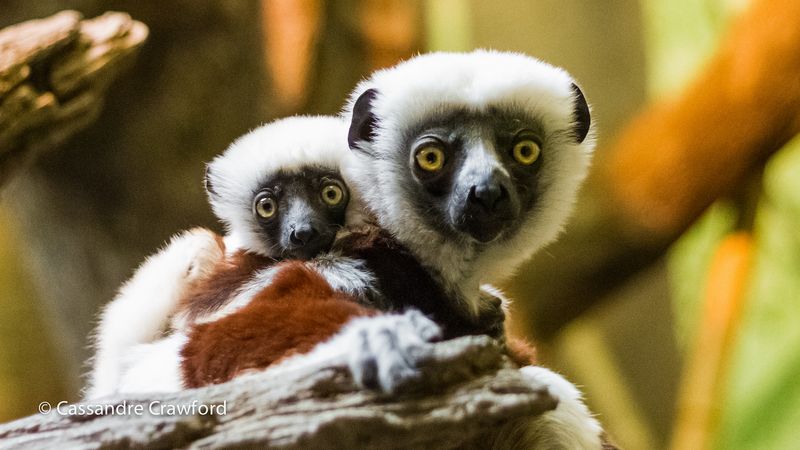
With a leap that seems almost magical, Coquerel’s sifaka defies gravity in Madagascar’s forests. This remarkable primate, known for its striking white fur accented with reddish-brown patches, bounds from tree to tree with a dancer’s grace.
Living in tight-knit social groups, these sifakas maintain complex relationships, often seen grooming one another or engaging in playful antics. Their diet of leaves, fruit, and flowers not only sustains them but also plays a crucial role in their ecosystem, aiding in seed dispersal.
However, their existence is threatened by deforestation and hunting. Conservation efforts are paramount to protect these enchanting creatures, as they continue to captivate all who are fortunate enough to witness their balletic movements in the wild.
11. Madagascar Hissing Cockroach
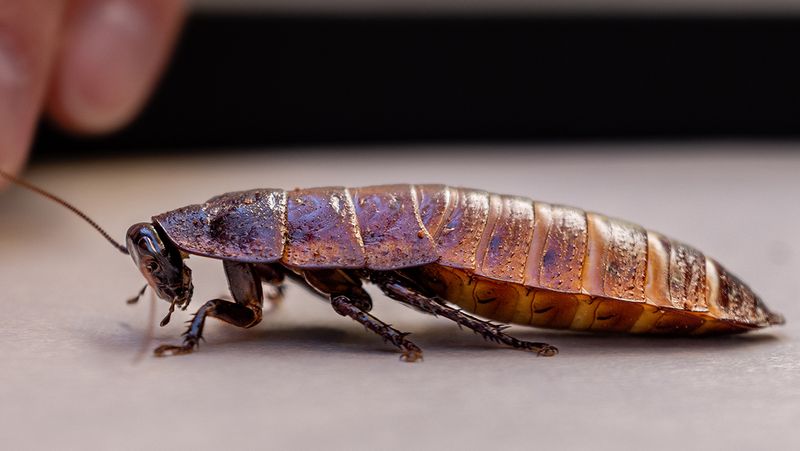
In the heart of Madagascar’s rainforests, a creature that often evokes fascination and fear is the Madagascar hissing cockroach. Unlike its pestilent relatives, this species is a marvel of the insect world, known for its distinct hissing sound produced by expelling air through tiny openings in its abdomen.
These cockroaches are surprisingly clean, playing a vital role in their ecosystem as decomposers. Their glossy exoskeleton and gentle demeanor make them popular in educational settings, where they help demystify the insect world.
Despite their notoriety, Madagascar hissing cockroaches are threatened by habitat loss. Conservationists emphasize the importance of preserving their natural habitats, highlighting their ecological significance as nature’s recyclers.
12. Giraffe Weevil
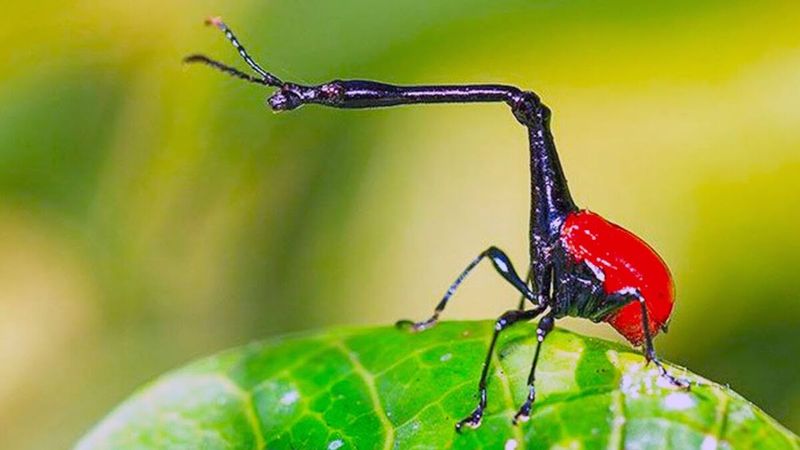
High in Madagascar’s forests, an insect with a neck like no other navigates the canopy. The giraffe weevil, named for its elongated neck, is a spectacle of nature’s ingenuity. This unique adaptation aids males during combat over mates, showcasing an evolution of form and function.
Their striking red and black coloration serves not only for attraction but also for camouflage among the forest’s flora. These weevils roll leaves to create protective nests for their eggs, a behavior that underscores their role in the ecosystem.
The giraffe weevil’s habitat is threatened by deforestation, yet conservationists work tirelessly to ensure the survival of such unique species. By protecting Madagascar’s forests, they secure a future for the giraffe weevil and the myriad of life that depends on these lush ecosystems.
13. Ploughshare Tortoise
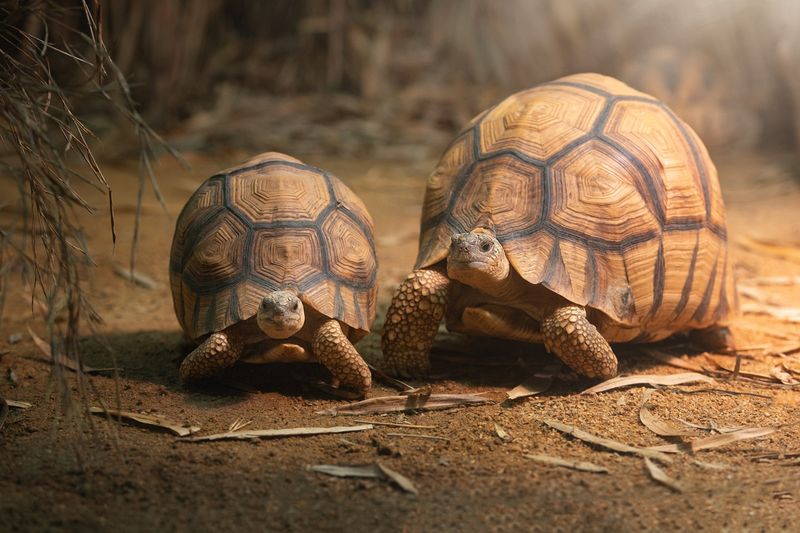
In Madagascar, the rare ploughshare tortoise carries with it a legacy of survival and elegance. Its golden, domed shell gleams under the sun, a testament to nature’s craftsmanship. This tortoise, one of the world’s most endangered, faces threats from illegal poaching and habitat loss.
Their slow, deliberate movements belie a life of resilience, subsisting on the sparse vegetation of Madagascar’s dry forests. The ploughshare tortoise plays a crucial role in their ecosystem, contributing to seed dispersal and nutrient cycling.
Conservationists have rallied to protect this emblem of Madagascar’s wildlife, employing anti-poaching measures and habitat restoration. The tortoise’s plight highlights the delicate balance of biodiversity and the urgent need for continued conservation efforts.
14. Madagascar Paradise Flycatcher
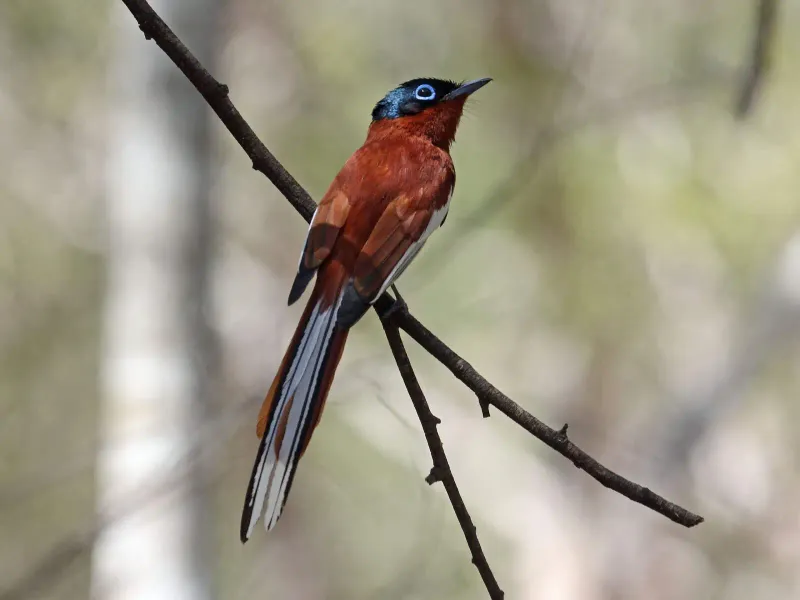
The Madagascar Paradise Flycatcher is a strikingly beautiful bird, celebrated for its long tail feathers and vibrant colors. Males are especially eye-catching, with their contrasting plumage and elaborate courtship displays.
Found throughout the island, these birds are often seen flitting through the forest canopy in search of insects. Their melodious calls add a delightful soundtrack to Madagascar’s lush landscapes.
Birdwatchers visiting Madagascar are in for a treat, as the Paradise Flycatcher’s presence is a highlight of the island’s avian diversity.
15. Blue Coua
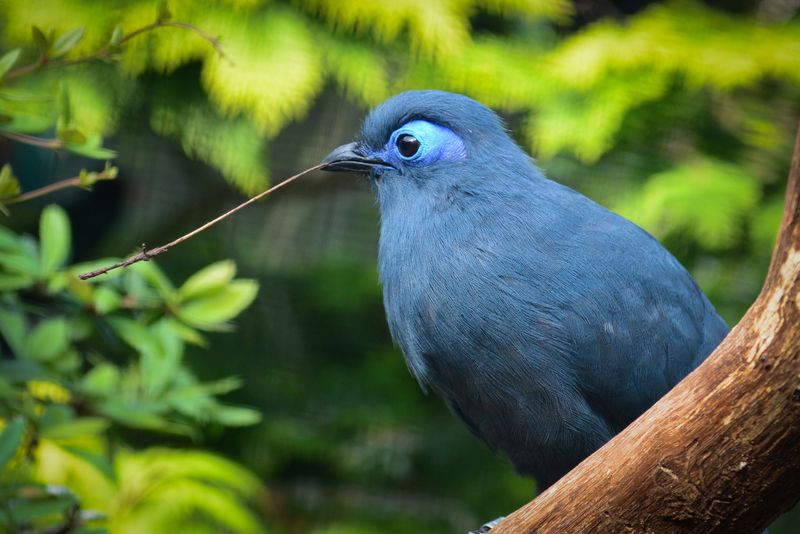
Among the vibrant avian life of Madagascar, the blue coua stands out with its dazzling plumage. This bird, with a body of deep blue and a distinctive red eye ring, is a sight to behold. Despite its beauty, the blue coua is more than just a pretty face; it plays a significant role in its ecosystem as a seed disperser.
Its gentle cooing and graceful flight add to the mystique of Madagascar’s forests. Observing a blue coua is akin to witnessing a piece of the sky come alive among the trees.
Yet, like many of Madagascar’s endemic species, the blue coua faces threats from habitat destruction. Efforts to preserve their habitats ensure that the melodic presence of the blue coua continues to enchant bird watchers and nature enthusiasts from around the world.
16. Verreaux’s Sifaka
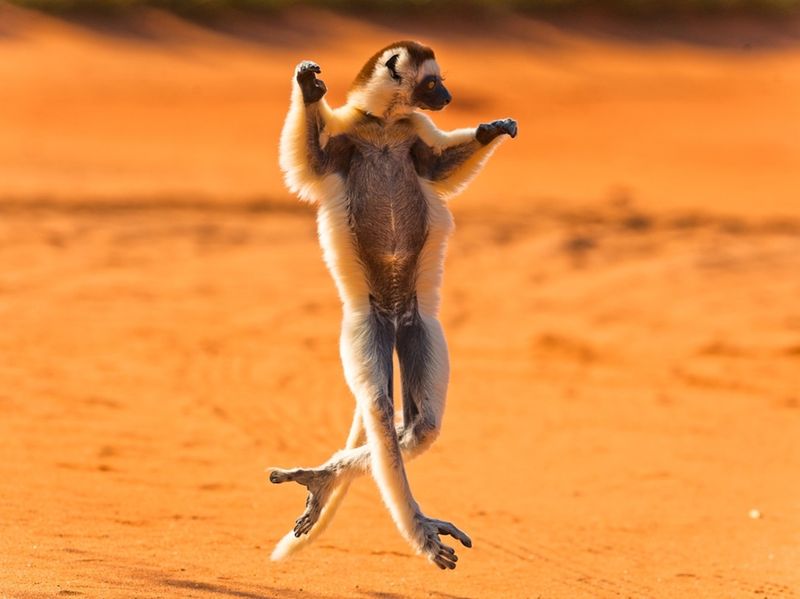
With a leap that defies gravity, the Verreaux’s sifaka is a marvel of Madagascar’s wildlife. This primate, with its striking white body and black face, exhibits a unique mode of locomotion—sideways leaping. Watching them cross the forest floor is a spectacle of agility and grace.
Living in arid regions, their diet consists primarily of leaves and occasionally fruit, showcasing remarkable adaptability. These sifakas live in social groups, maintaining strong family bonds essential for survival.
However, habitat destruction threatens their existence, as forests make way for agriculture. Conservation efforts focus on protecting these environments, ensuring the Verreaux’s sifaka continues to mesmerize with its balletic movements and maintain its role in Madagascar’s rich biodiversity.
17. Madagascar Fish Eagle
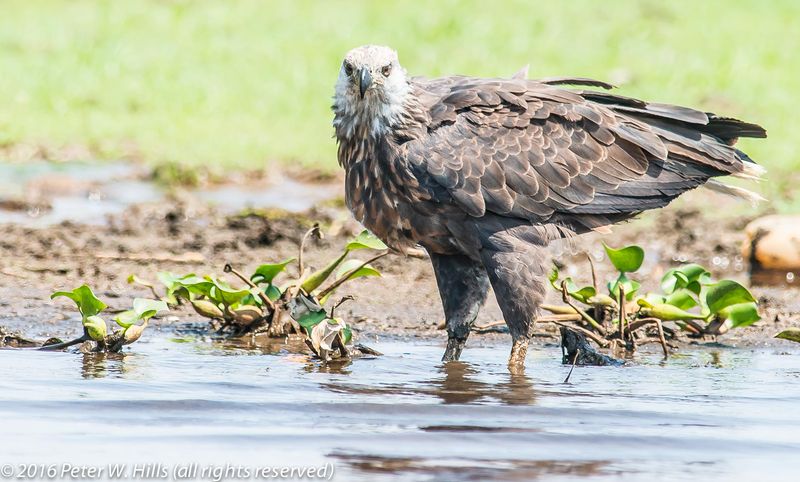
Soaring over Madagascar’s lakes with an elegance unmatched, the Madagascar fish eagle commands the sky. As one of the rarest birds of prey, its sharp eyes and powerful wings make it a formidable hunter, diving with precision to capture fish from the waters below.
With a wingspan that spans over two meters, the Madagascar fish eagle is a majestic symbol of power and freedom. Its presence is vital in maintaining the balance of aquatic ecosystems, controlling fish populations and contributing to ecological health.
Unfortunately, habitat destruction and competition for food pose significant threats to their populations. Conservation efforts are crucial in protecting their habitats and ensuring the skies over Madagascar remain graced by the silhouette of this magnificent bird.
18. Tenrec
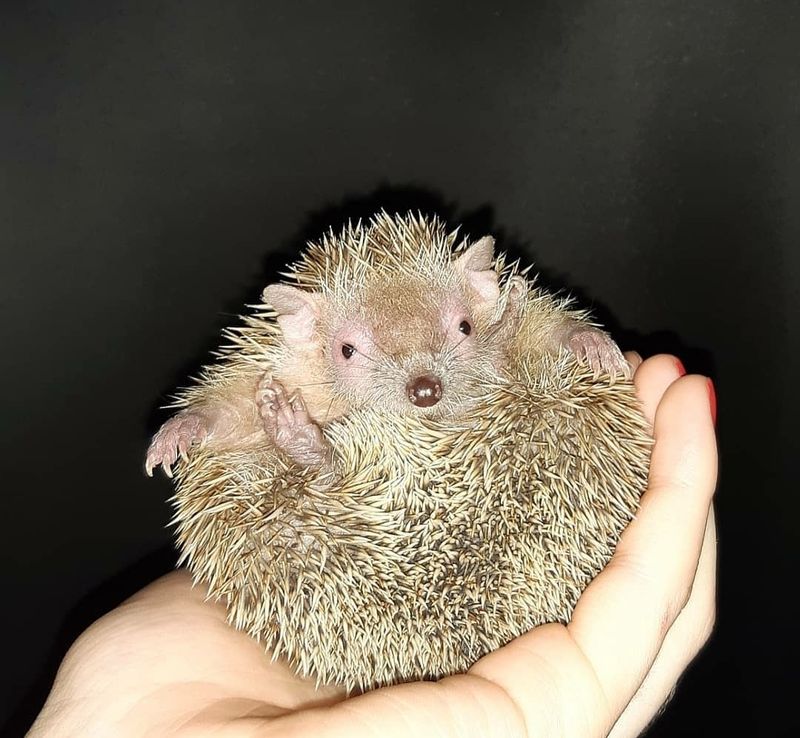
Scurrying through the undergrowth of Madagascar’s forests is a creature that defies categorization—the tenrec. With a resemblance to hedgehogs and shrews, these small mammals are a testament to Madagascar’s unique evolutionary paths. Their diverse forms and sizes reflect a wide adaptation to the island’s varied environments.
Tenrecs play a crucial role as insectivores, controlling insect populations and contributing to the ecological balance. Their nocturnal habits and burrowing lifestyle make them elusive yet fascinating to those who venture into their habitats.
However, deforestation and habitat fragmentation threaten their existence. Efforts to protect Madagascar’s forests are vital, ensuring that these enigmatic creatures continue to thrive and play their role in the delicate tapestry of the island’s biodiversity.
19. Comet Moth
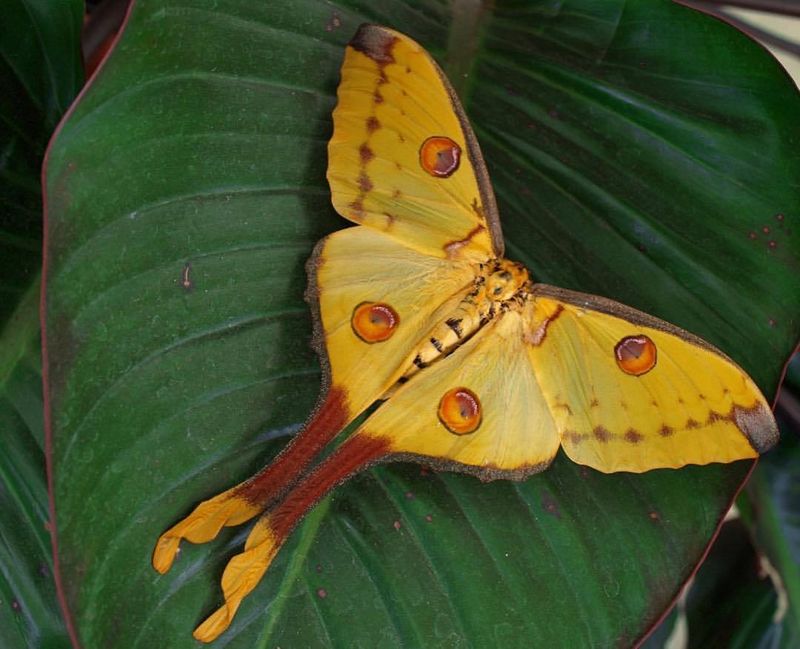
In the moonlit forests of Madagascar, a creature of ethereal beauty flutters silently—the comet moth. With its large, yellow wings and long, trailing tails, it captures the imagination, embodying the island’s enchantment.
This moth’s lifecycle is a marvel, from its brief, non-feeding adult phase to the larval stage, where it voraciously consumes leaves. Their presence is a testament to the intricate web of life that thrives in Madagascar’s unique ecology.
Despite their beauty, comet moths face threats from habitat destruction and climate change. Conservationists strive to protect their habitats and understand their ecology better, ensuring that future generations can witness the comet moth’s nocturnal dance in Madagascar’s forests.
20. Madagascar Pygmy Kingfisher
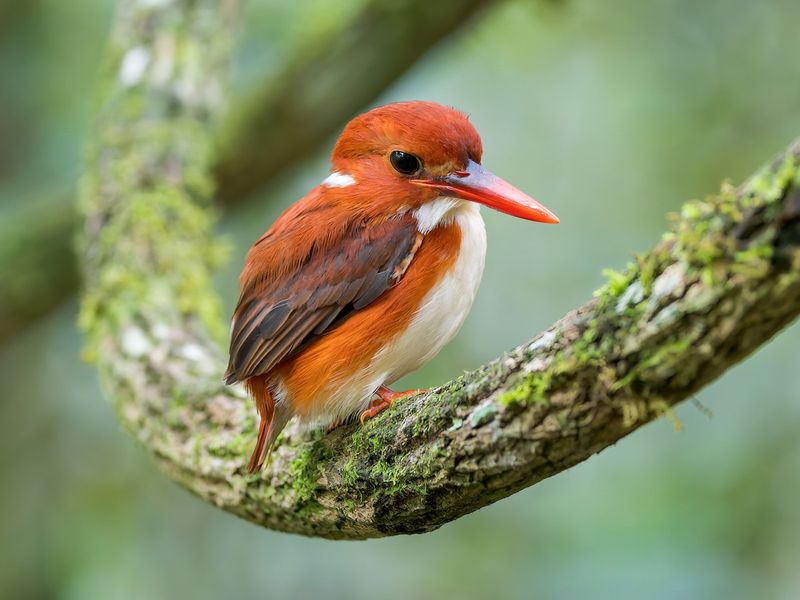
Perched delicately among the trees, the Madagascar pygmy kingfisher dazzles with vibrant colors—a tiny jewel in the forest. With its bright orange plumage and vivid blue crown, this bird is a master of charm in miniature form. Despite its small size, its presence is significant, as it plays a role in controlling insect populations.
Their swift, darting flight is a blur of color, as they skillfully catch insects mid-air. This kingfisher’s preference for dense foliage makes spotting one a rewarding challenge for bird enthusiasts.
Threats from deforestation and habitat degradation loom large, however. Conservationists emphasize the importance of habitat preservation to ensure that the Madagascar pygmy kingfisher continues to light up the forests with its breathtaking presence.


